Miquel Esplà-Gomis
Smart Bilingual Focused Crawling of Parallel Documents
May 23, 2024
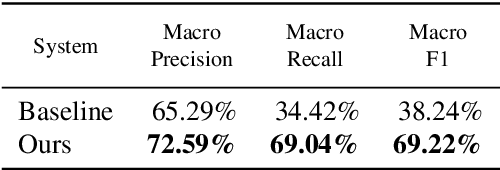

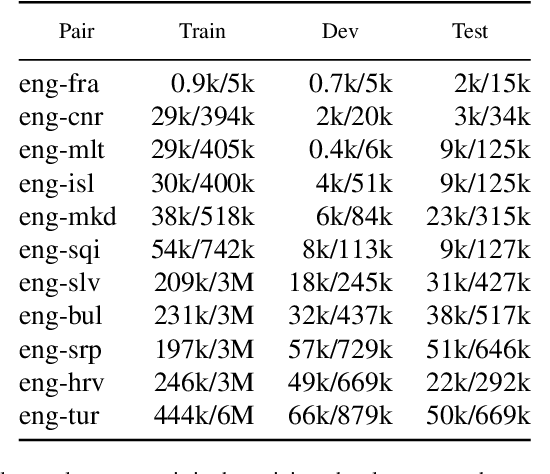
Abstract:Crawling parallel texts $\unicode{x2014}$texts that are mutual translations$\unicode{x2014}$ from the Internet is usually done following a brute-force approach: documents are massively downloaded in an unguided process, and only a fraction of them end up leading to actual parallel content. In this work we propose a smart crawling method that guides the crawl towards finding parallel content more rapidly. Our approach builds on two different models: one that infers the language of a document from its URL, and another that infers whether a pair of URLs link to parallel documents. We evaluate both models in isolation and their integration into a crawling tool. The results demonstrate the individual effectiveness of both models and highlight that their combination enables the early discovery of parallel content during crawling, leading to a reduction in the amount of downloaded documents deemed useless, and yielding a greater quantity of parallel documents compared to conventional crawling approaches.
Do Language Models Care About Text Quality? Evaluating Web-Crawled Corpora Across 11 Languages
Mar 13, 2024Abstract:Large, curated, web-crawled corpora play a vital role in training language models (LMs). They form the lion's share of the training data in virtually all recent LMs, such as the well-known GPT, LLaMA and XLM-RoBERTa models. However, despite this importance, relatively little attention has been given to the quality of these corpora. In this paper, we compare four of the currently most relevant large, web-crawled corpora (CC100, MaCoCu, mC4 and OSCAR) across eleven lower-resourced European languages. Our approach is two-fold: first, we perform an intrinsic evaluation by performing a human evaluation of the quality of samples taken from different corpora; then, we assess the practical impact of the qualitative differences by training specific LMs on each of the corpora and evaluating their performance on downstream tasks. We find that there are clear differences in quality of the corpora, with MaCoCu and OSCAR obtaining the best results. However, during the extrinsic evaluation, we actually find that the CC100 corpus achieves the highest scores. We conclude that, in our experiments, the quality of the web-crawled corpora does not seem to play a significant role when training LMs.
Non-Fluent Synthetic Target-Language Data Improve Neural Machine Translation
Jan 29, 2024Abstract:When the amount of parallel sentences available to train a neural machine translation is scarce, a common practice is to generate new synthetic training samples from them. A number of approaches have been proposed to produce synthetic parallel sentences that are similar to those in the parallel data available. These approaches work under the assumption that non-fluent target-side synthetic training samples can be harmful and may deteriorate translation performance. Even so, in this paper we demonstrate that synthetic training samples with non-fluent target sentences can improve translation performance if they are used in a multilingual machine translation framework as if they were sentences in another language. We conducted experiments on ten low-resource and four high-resource translation tasks and found out that this simple approach consistently improves translation performance as compared to state-of-the-art methods for generating synthetic training samples similar to those found in corpora. Furthermore, this improvement is independent of the size of the original training corpus, the resulting systems are much more robust against domain shift and produce less hallucinations.
* arXiv admin note: text overlap with arXiv:2109.03645
Cross-lingual neural fuzzy matching for exploiting target-language monolingual corpora in computer-aided translation
Jan 16, 2024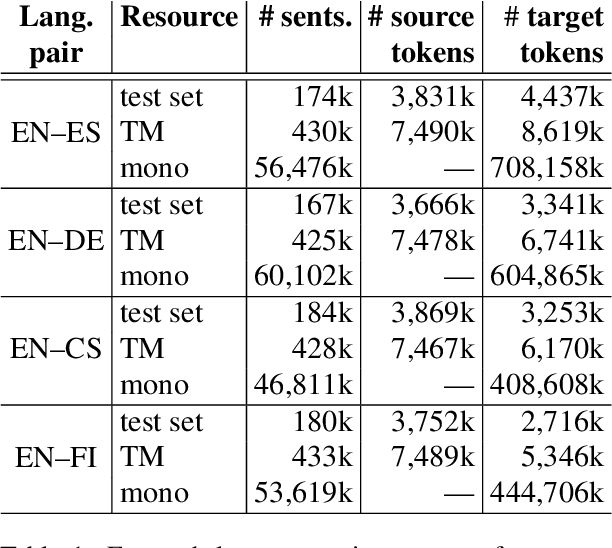


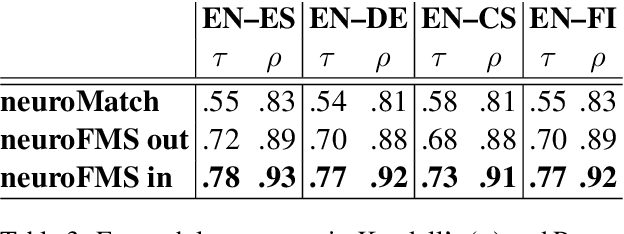
Abstract:Computer-aided translation (CAT) tools based on translation memories (MT) play a prominent role in the translation workflow of professional translators. However, the reduced availability of in-domain TMs, as compared to in-domain monolingual corpora, limits its adoption for a number of translation tasks. In this paper, we introduce a novel neural approach aimed at overcoming this limitation by exploiting not only TMs, but also in-domain target-language (TL) monolingual corpora, and still enabling a similar functionality to that offered by conventional TM-based CAT tools. Our approach relies on cross-lingual sentence embeddings to retrieve translation proposals from TL monolingual corpora, and on a neural model to estimate their post-editing effort. The paper presents an automatic evaluation of these techniques on four language pairs that shows that our approach can successfully exploit monolingual texts in a TM-based CAT environment, increasing the amount of useful translation proposals, and that our neural model for estimating the post-editing effort enables the combination of translation proposals obtained from monolingual corpora and from TMs in the usual way. A human evaluation performed on a single language pair confirms the results of the automatic evaluation and seems to indicate that the translation proposals retrieved with our approach are more useful than what the automatic evaluation shows.
Rethinking Data Augmentation for Low-Resource Neural Machine Translation: A Multi-Task Learning Approach
Sep 08, 2021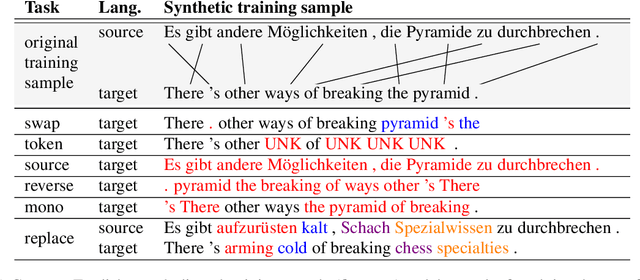
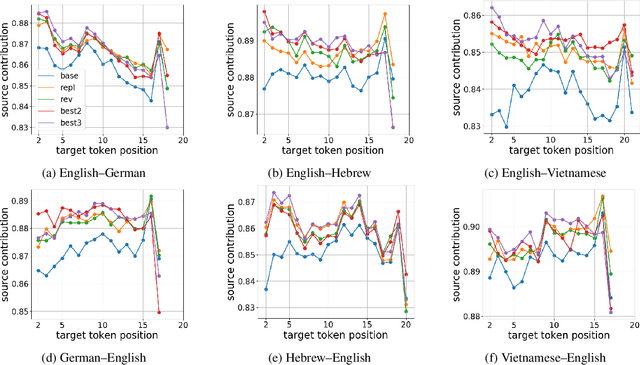
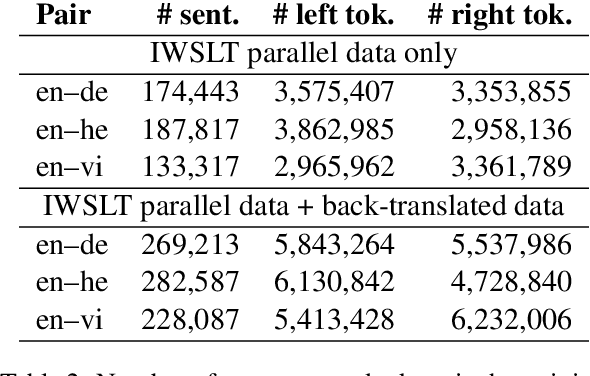
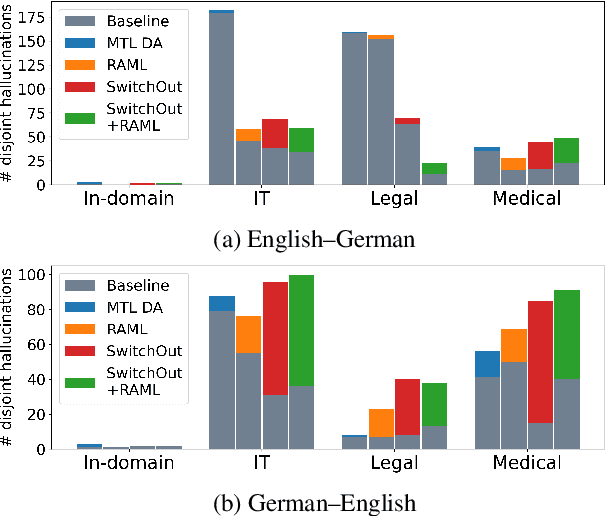
Abstract:In the context of neural machine translation, data augmentation (DA) techniques may be used for generating additional training samples when the available parallel data are scarce. Many DA approaches aim at expanding the support of the empirical data distribution by generating new sentence pairs that contain infrequent words, thus making it closer to the true data distribution of parallel sentences. In this paper, we propose to follow a completely different approach and present a multi-task DA approach in which we generate new sentence pairs with transformations, such as reversing the order of the target sentence, which produce unfluent target sentences. During training, these augmented sentences are used as auxiliary tasks in a multi-task framework with the aim of providing new contexts where the target prefix is not informative enough to predict the next word. This strengthens the encoder and forces the decoder to pay more attention to the source representations of the encoder. Experiments carried out on six low-resource translation tasks show consistent improvements over the baseline and over DA methods aiming at extending the support of the empirical data distribution. The systems trained with our approach rely more on the source tokens, are more robust against domain shift and suffer less hallucinations.
Estimating post-editing effort: a study on human judgements, task-based and reference-based metrics of MT quality
Oct 14, 2019
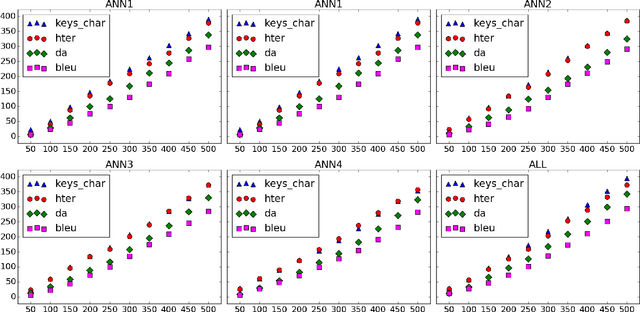

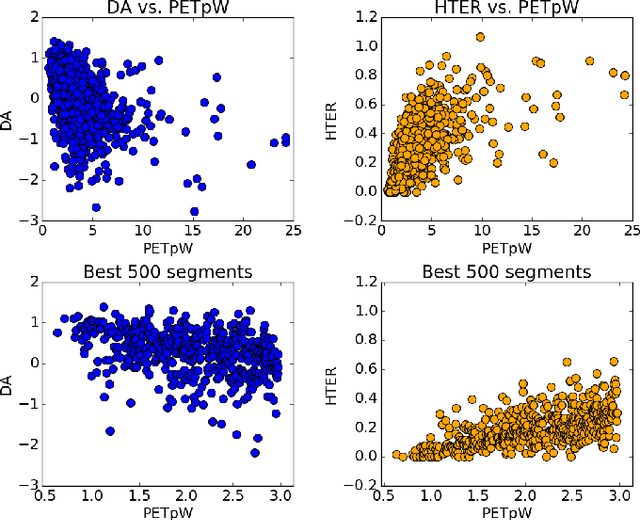
Abstract:Devising metrics to assess translation quality has always been at the core of machine translation (MT) research. Traditional automatic reference-based metrics, such as BLEU, have shown correlations with human judgements of adequacy and fluency and have been paramount for the advancement of MT system development. Crowd-sourcing has popularised and enabled the scalability of metrics based on human judgements, such as subjective direct assessments (DA) of adequacy, that are believed to be more reliable than reference-based automatic metrics. Finally, task-based measurements, such as post-editing time, are expected to provide a more detailed evaluation of the usefulness of translations for a specific task. Therefore, while DA averages adequacy judgements to obtain an appraisal of (perceived) quality independently of the task, and reference-based automatic metrics try to objectively estimate quality also in a task-independent way, task-based metrics are measurements obtained either during or after performing a specific task. In this paper we argue that, although expensive, task-based measurements are the most reliable when estimating MT quality in a specific task; in our case, this task is post-editing. To that end, we report experiments on a dataset with newly-collected post-editing indicators and show their usefulness when estimating post-editing effort. Our results show that task-based metrics comparing machine-translated and post-edited versions are the best at tracking post-editing effort, as expected. These metrics are followed by DA, and then by metrics comparing the machine-translated version and independent references. We suggest that MT practitioners should be aware of these differences and acknowledge their implications when deciding how to evaluate MT for post-editing purposes.
UAlacant machine translation quality estimation at WMT 2018: a simple approach using phrase tables and feed-forward neural networks
Nov 06, 2018
Abstract:We describe the Universitat d'Alacant submissions to the word- and sentence-level machine translation (MT) quality estimation (QE) shared task at WMT 2018. Our approach to word-level MT QE builds on previous work to mark the words in the machine-translated sentence as \textit{OK} or \textit{BAD}, and is extended to determine if a word or sequence of words need to be inserted in the gap after each word. Our sentence-level submission simply uses the edit operations predicted by the word-level approach to approximate TER. The method presented ranked first in the sub-task of identifying insertions in gaps for three out of the six datasets, and second in the rest of them.
Using external sources of bilingual information for on-the-fly word alignment
Dec 07, 2012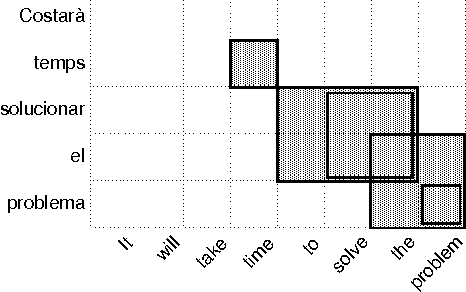
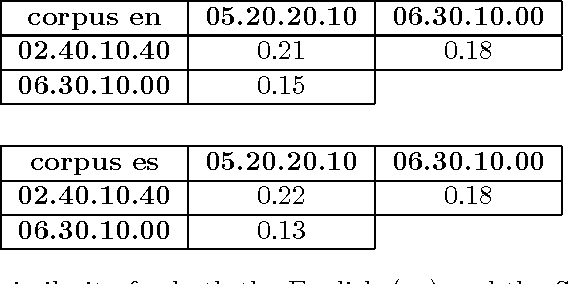
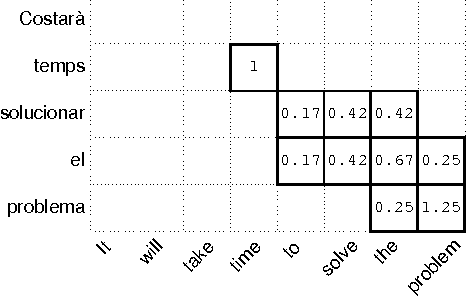
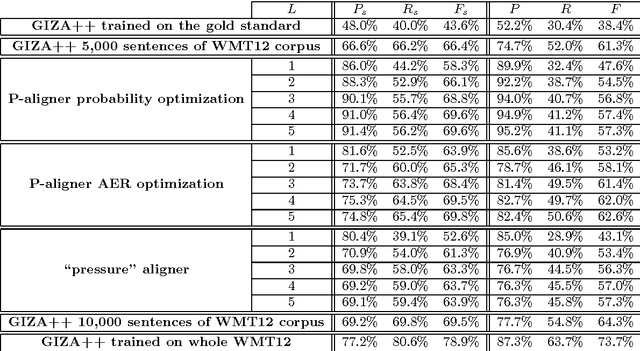
Abstract:In this paper we present a new and simple language-independent method for word-alignment based on the use of external sources of bilingual information such as machine translation systems. We show that the few parameters of the aligner can be trained on a very small corpus, which leads to results comparable to those obtained by the state-of-the-art tool GIZA++ in terms of precision. Regarding other metrics, such as alignment error rate or F-measure, the parametric aligner, when trained on a very small gold-standard (450 pairs of sentences), provides results comparable to those produced by GIZA++ when trained on an in-domain corpus of around 10,000 pairs of sentences. Furthermore, the results obtained indicate that the training is domain-independent, which enables the use of the trained aligner 'on the fly' on any new pair of sentences.
 Add to Chrome
Add to Chrome Add to Firefox
Add to Firefox Add to Edge
Add to Edge